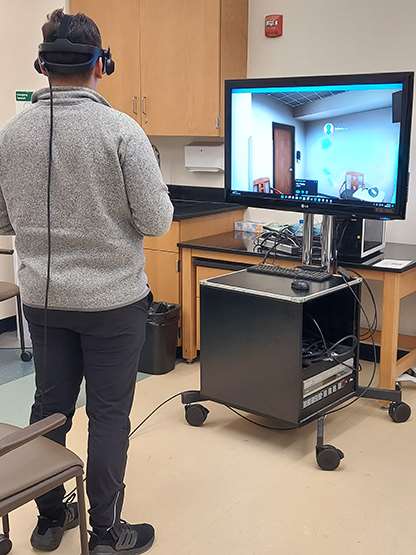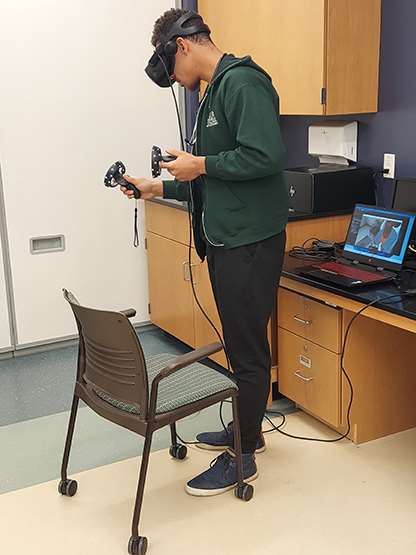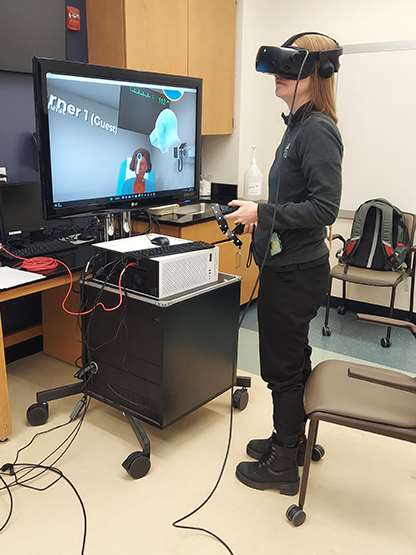Virtual Reality at MCW: A Bench to Bedside Experience
The Office of Educational Improvement (OEI) loves to collaborate with our ambitious and creative MCW faculty. OEI is working to bring virtual reality (VR) to the education mission at MCW.
Working with Acadicus, a virtual reality software company based in Madison, Wisconsin, the OEI team has designed several virtual spaces in which to train health professionals. The Acadicus platform is flexible and allows for scene creation that will focus on specific skills.
Acadicus also allows for additional faculty or support users to be present in the VR environment without the knowledge of the participants. This can be done in a Ghost mode, which renders the user invisible to the rest of the participants. Ghost mode allows additional faculty to observe and report without interfering in the student's experience and/or allows support users to modify settings within the environment on the fly, relieving the SP of the need to carry on a conversation while simultaneously monitoring stats and settings.
Recently, we teamed up with Drs. Kathleen Ryan and Teresa Maatman to bring two clinical scenarios to their M2 students in Bench to Bedside. Over the course of four hours, 24 students interacted in virtual reality with patients and another two dozen observed their work on big screens. The students collaborated to collect vitals and assess their patients’ medical needs, including a code scenario.
Prior to setting up the VR scenes, Dr. Maatman provided the MCW VR team with 2 cases and specific vital signs to program. Scene set up included choosing the setting (clinic, Emergency room, etc.), the patient, the presenting state of the patient, and the medical tools needed to assess the patient. Vitals are shown on a Virtual Monitor, so all in the room can easily see the results and discuss them. If a conversation with a patient is part of the experience, the facilitator can speak, or act, as the patient.
The students were excited to try out the high-end technology but were surprised they could speak to the virtual standardized patient (SP). The SP, voice-acted by OEI’s Amy Beierle, was given a brief script from the course directors, and made the standardized patient, Sophie, come to life. The students asked questions and responded to Sophie when she told them about her health concerns. Even though this was a virtual experience for the standardized patient, it felt like a real visit to the doctor's office. Sophie was voice-acted in non-VR mode, off campus, making this a truly collaborative hybrid experience.
The virtual experience happened after Dr. Maatman attended a roundtable presentation on VR during the Innovations in Healthcare Education Research (IHER) conference in September. OEI’s work with the Emergency Medicine team to create a scene for their electives allowed Dr. Maatman to see the potential in re-working the scene for her M2 students. The platform is flexible in that virtual clinics and patients can be revised to create different situations that may be difficult for students to encounter via traditional standardized patient interviews or simulations.
If you are interested in learning more about educating with virtual reality, please contact the Office of Educational Improvement.




